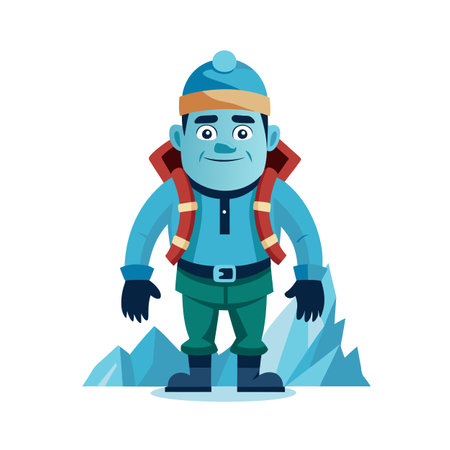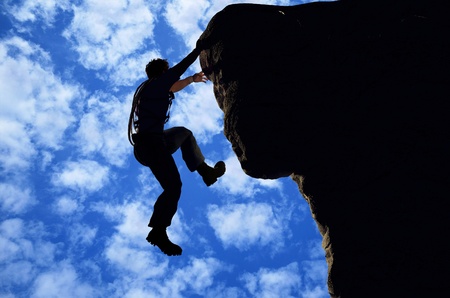1. Introduction: The Allure and Challenge of Solo Hiking in the Rockies
The Rocky Mountains call out to adventurers, and solo hiking here is an experience like no other. Whether you’re a seasoned hiker or just starting your journey, there’s something about hitting the trails alone that feels both thrilling and deeply rewarding. But what exactly makes solo hiking in the Rockies so captivating for outdoor enthusiasts across America?
Personal Growth on the Trail
When you set off on a solo hike, every step is yours to take. There’s no one else to rely on, which means you get to test your limits, face challenges head-on, and discover strengths you didn’t know you had. Many hikers say that tackling difficult climbs or navigating tricky weather alone gives them a sense of independence and confidence they carry back into everyday life.
Connection to Nature
The Rockies are famous for their breathtaking landscapes—think alpine lakes, wildflower meadows, and snow-capped peaks. When you hike solo, you notice more: the scent of pine needles underfoot, the distant call of a mountain jay, even the rhythm of your own heartbeat. Without the distraction of conversation, many hikers find themselves tuning in more deeply to the sights and sounds around them.
Unique Rewards of Going Solo
| Reward | Description |
|---|---|
| Freedom & Flexibility | Set your own pace and choose your path without compromise. |
| Self-Reflection | Time alone in nature often leads to new insights about yourself and your goals. |
| Stronger Sense of Accomplishment | Completing a hike solo feels extra satisfying—you did it all on your own! |
Of course, solo hiking in the Rockies isn’t just about beauty and self-discovery; it also comes with real risks and challenges. But for many Americans, those very challenges are what make this adventure so compelling. In this series, we’ll dig deeper into strategies for safety, share inspiring stories from solo hikers who’ve tackled the Rockies, and explore how you can prepare for your own unforgettable journey.
2. Essential Safety Tips: Know Before You Go
Heading out for a solo hike in the Rockies is an incredible way to experience the wild, but it comes with unique challenges. Whether you’re chasing summits or just want quiet forest trails, getting prepared is the best way to make sure your adventure is both safe and memorable. Here’s what you need to know before lacing up your boots:
Route Planning: Map Out Your Journey
Never underestimate the power of a good plan. Start by picking a trail that matches your experience level—some Rockies trails are tough even for seasoned hikers. Grab an up-to-date map (paper or offline digital), and mark key spots like trailheads, water sources, shelters, and potential exit points. Always tell someone at home where youre going and when you plan to return.
Quick Route Planning Checklist
| Task | Why It Matters |
|---|---|
| Choose trail suitable for solo hiking | Limits risks of getting over your head |
| Download offline maps/GPS tracks | No cell service in remote areas |
| Share itinerary with friend/family | Makes rescue easier if needed |
| Note bail-out points/exits | Essential in case of emergency |
Weather Awareness: Expect the Unexpected
The Rockies are notorious for fast-changing weather—sunshine can turn into hail or snow within an hour. Check local mountain forecasts before you go (not just city weather apps). Layer clothing and always pack rain gear, even on “perfect” days. If thunder rolls in, avoid ridgelines and exposed high ground until it passes.
Weather Prep Must-Haves
- Waterproof jacket & pants
- Warm base layers (even in summer)
- Hat and gloves
- Sunscreen & sunglasses (the sun’s intense at altitude!)
- Extra food & water—delays happen when storms hit
Wildlife Encounters: Be Bear Aware (and More)
The Rockies are home to black bears, grizzlies, moose, elk, mountain lions, and more. Solo hikers should be extra alert: make noise on the trail, especially in dense forests or near streams where wildlife might not hear you coming. Carry bear spray in an easy-to-reach spot and know how to use it (practice first!). Never approach or feed animals—give them lots of space.
Common Wildlife & How to Respond
| Animal Encountered | Your Move |
|---|---|
| Bear (Black or Grizzly) | Stay calm; don’t run; speak softly; back away slowly; use bear spray if needed. |
| Moose/Elk | Give wide berth; if agitated, retreat; never get between mother and young. |
| Mountain Lion | Stand tall; make yourself look big; pick up small children; never turn your back or run. |
| Coyotes/Wolves | Avoid feeding or approaching; haze by making noise if they get close. |
Emergency Protocols: What If Things Go Wrong?
If something unexpected happens—injury, getting lost, sudden storms—having a plan can save your life. Carry a basic first aid kit, whistle, and emergency blanket. Know how to signal for help (three blasts on a whistle = distress). A personal locator beacon (PLB) or satellite communicator is highly recommended since phone coverage is spotty at best.
Pocket Emergency Actions Guide
- If lost: Stop, stay calm, try to retrace steps, don’t keep wandering.
- If injured: Treat what you can, stay put if moving is unsafe.
- If severe weather hits: Seek lower ground, shelter under trees (but not isolated ones) away from ridges/peaks.
- If animal encounter goes bad: Use bear spray as trained, then leave area calmly when safe.
- If all else fails: Activate your PLB/satellite device and wait in place for rescue.
Tackling the Rockies solo is all about balancing freedom with respect for nature’s unpredictability. These foundational safety practices let you focus on soaking up every step of the journey—confident that you’re ready for whatever comes your way.

3. Gearing Up: Must-Have Equipment and Tech
Solo hiking in the Rockies is as much about preparation as it is about adventure. The right gear can turn a challenging day into an epic memory—and keep you safe when things get tough. Here’s a breakdown of essential equipment and tech every solo hiker should consider before heading out into the Rockies.
Navigation: Never Lose Your Way
Getting lost isn’t just inconvenient—it can be dangerous, especially when you’re alone. Reliable navigation tools are non-negotiable for any solo hiker.
| Tool | Why You Need It | Pro Tip |
|---|---|---|
| GPS Device or Smartphone App | Pinpoints your location even on remote trails; many work offline | Download offline maps before heading out (e.g., Gaia GPS, AllTrails) |
| Physical Topographic Map | No battery required; a classic backup if tech fails | Waterproof map cases protect against mountain weather |
| Compass | Old-school but reliable for orienting yourself with your map | Practice basic compass skills at home first |
Communication Devices: Stay Connected When It Matters Most
The Rockies have plenty of dead zones where cell service disappears. Bringing backup communication can be life-saving in an emergency.
| Device | Main Function | Cultural Note/Tip |
|---|---|---|
| Satellite Messenger (e.g., Garmin inReach, SPOT) | Sends SOS signals and allows basic texting via satellite networks | A must-have for solo hikers—many US National Parks recommend them for remote areas |
| Whistle | Loud noise for signaling nearby people in case of trouble | Carries farther than shouting and never runs out of batteries |
| Portable Power Bank | Keeps phones and GPS devices running longer on multi-day hikes | Choose rugged, weather-resistant models for mountain use |
Dressing for Success: Layer Up Like a Pro
The Rockies are famous for unpredictable weather—you might start in sunshine and end up in a snow flurry by afternoon. Layering is the name of the game.
- Base Layer: Moisture-wicking fabric (like merino wool or synthetic blends) to keep sweat off your skin.
- Mid Layer: Insulating fleece or lightweight down jacket—think warmth without bulk.
- Outer Layer: Waterproof, breathable shell jacket and pants to block wind and rain.
- Packing Tip: Always bring extra socks and gloves; cold feet or hands can cut your hike short fast!
Survival Tools: Be Ready for Anything
You might not plan to need these, but having solid survival gear is a confidence booster when hiking solo in wild country.
- First Aid Kit: Include blister pads, bandages, pain relievers, and any personal meds.
- Multi-tool or Knife: For repairs, food prep, or emergencies—don’t skimp on quality.
- Headlamp with Extra Batteries: Essential if your hike goes longer than expected; hands-free lighting is key on rocky trails.
- Emergency Blanket/Bivy Sack: Compact lifesavers if you’re caught out overnight or need extra warmth while waiting for help.
- Bearspray: In grizzly country (Montana, Wyoming, Colorado), carry it within easy reach—not buried in your pack.
- Lighter & Waterproof Matches: For starting a fire in cold or wet conditions—a simple skill that could save your life.
- Trekking Poles: Not just for balance—help reduce knee strain on long descents common in Rocky Mountain terrain.
Your Gear Checklist at a Glance
| Solo Hiking Essentials for the Rockies | |
|---|---|
| Navigation Tools (GPS/Map/Compass) | Packed & Tested? |
| Satellite Messenger/Whistle/Power Bank | Packed & Charged? |
| Dress in Layers (Base/Mid/Outer) | Packed? |
| First Aid Kit & Meds | Packed? |
| Bearspray (if needed) | Packed & Accessible? |
| Trekking Poles | Packed? |
| Lighter/Matches & Emergency Blanket | Packed? |
| Sufficient Food & Water | Packed? |
This gear list is more than just stuff to carry—it’s peace of mind. When you’re solo on those vast Rocky Mountain trails, being well-equipped lets you focus on the beauty around you instead of worrying about what could go wrong.
4. On the Trail: Strategies for Confidence and Resilience
Staying Calm When Youre Miles from Anywhere
Solo hiking in the Rockies can feel intimidating, but developing a calm mindset is key. Take deep breaths when you feel anxious—nature itself can help ground you. Remember, most fears are just thoughts, not reality. Focus on the sounds of birds or the crunch of gravel under your boots to anchor yourself in the moment.
Maintaining Situational Awareness
Situational awareness is more than knowing your location; its about reading the environment and tuning into your senses. Stop occasionally, look around, and listen. Notice changes in weather, wildlife activity, or trail conditions. Use these cues to make informed decisions, whether thats speeding up to beat incoming rain or slowing down to let wildlife pass safely.
Quick Situational Awareness Checklist
| Check | What to Look For | Why It Matters |
|---|---|---|
| Weather | Clouds forming, wind picking up | Avoid getting caught in storms |
| Trail Markers | Blazes, signs, cairns | Stay on route and prevent getting lost |
| Wildlife Signs | Tracks, scat, animal sounds | Avoid dangerous encounters |
| Your Own Body | Fatigue, thirst, hunger signals | Prevent exhaustion or dehydration |
Pacing Yourself for Success
The Rockies arent a sprint—theyre a marathon. Set a comfortable pace early on and stick with it. Its tempting to push hard at first when adrenaline is high, but steady hikers last longest. Take regular breaks to hydrate and snack; use landmarks like big boulders or scenic overlooks as natural rest stops.
Dealing with Solitude and Unexpected Events
Solo hiking means lots of quiet time—which can be both peaceful and challenging. If loneliness creeps in, try listening to natures soundtrack or keeping a small journal to jot down observations. If something unexpected happens—like losing the trail or sudden weather changes—pause before reacting. Assess your options calmly using a problem-solving mindset.
Coping Tips for Common Solo Hiking Challenges
| Challenge | Coping Strategy | Mindset Shift |
|---|---|---|
| Panic or Anxiety | Breathe deeply, focus on one step at a time | “I can handle this moment.” |
| Losing the Trail | Retrace steps, check GPS/map calmly | “I have tools to find my way back.” |
| Loneliness or Fear of Animals | Sing quietly, talk aloud, carry bear spray if needed | “Im prepared and capable.” |
| Sore Muscles/Fatigue | Pace yourself, take breaks, stretch gently | “Small steps get me there safely.” |
5. Inspirational Stories: Solo Hikers Who Blazed Their Own Trail
Real-Life Tales from the Rockies
Solo hiking in the Rocky Mountains is more than just a test of endurance—it’s a journey of self-discovery, resilience, and awe. Here are a few brief but powerful stories from hikers who took on the Rockies alone and came out with unforgettable experiences and lessons.
Megan’s Unexpected Snowstorm
Megan, a first-time solo hiker from Colorado Springs, set out for a weekend trek near Estes Park in early spring. Halfway through her planned route, an unexpected snowstorm rolled in. Instead of panicking, Megan relied on her navigation skills and emergency gear. She found shelter, kept warm with extra layers, and waited out the storm. “The Rockies taught me to respect the weather and always be prepared,” she recalls. “It was scary—but I felt stronger after.”
James’ Sunrise Summit
James, an experienced solo hiker from Denver, decided to summit Longs Peak before sunrise. Battling altitude sickness and fatigue, he pushed through by taking steady breaks and hydrating often. When he reached the summit just as the sun broke over the horizon, he described it as a moment of pure joy. “Being alone up there—just me and the mountains—reminded me why I hike solo: for moments like this.”
Samantha’s Wildlife Encounter
Samantha encountered a herd of elk while hiking solo along Bear Lake Trail. She remembered to keep her distance and observed quietly, feeling both humbled and thrilled. “I learned how important it is to respect wildlife,” she says. “It’s their home—I’m just a visitor.”
What They Learned: Quick Takeaways
| Hiker | Challenge Faced | Lesson Learned |
|---|---|---|
| Megan | Sudden snowstorm | Be prepared for changing weather; stay calm under pressure |
| James | Altitude & fatigue | Pace yourself; enjoy the journey as much as the destination |
| Samantha | Wildlife encounter | Respect nature; observe from a safe distance |
Inspired by Real People Just Like You
If you’re thinking about hitting the Rockies on your own, remember that every seasoned solo hiker started with that first uncertain step. These stories show that challenges can become your best memories—and sometimes, your greatest teachers.
6. Resources and Communities: Staying Connected
Solo hiking in the Rockies is an adventure, but it doesn’t mean you have to go it alone when it comes to planning and safety. There are tons of local organizations, digital communities, and reference guides designed to help solo hikers stay informed, safe, and connected. Below is a handy guide to some resources you’ll want to check out before hitting the trail.
Local Organizations
| Organization | What They Offer | How to Connect |
|---|---|---|
| Colorado Mountain Club (CMC) | Workshops, guided hikes, safety courses, and trail updates | CMC Website |
| Rocky Mountain Conservancy | Educational programs, volunteer opportunities, park info | RMC Website |
| Search and Rescue Colorado (SAR) | Emergency support and backcountry safety resources | SAR Colorado Website |
| National Park Service (NPS) – Rocky Mountain National Park | Trail conditions, permits, ranger talks, safety alerts | NPS RMNP Page |
Digital Communities for Solo Hikers
- Reddit: Try r/CampingandHiking or r/SoloTravel for real-world advice and trip reports from fellow hikers.
- Facebook Groups: Look for “Rockies Hiking & Backpacking” or “Women Who Hike Colorado” to connect with local hikers and join group events.
- The Outbound Collective: Browse trails, gear reviews, and trip stories specifically focused on outdoor adventures in the Rockies.
- Meetup: Many cities near the Rockies have hiking groups that welcome solo hikers for planned outings—great for finding trail buddies if you want them.
- AllTrails App: Use community-sourced trail maps, reviews, and condition reports so you can plan your hike with up-to-date info.
Reference Guides for Planning and Safety
- The Colorado Trail Databook: Pocket-sized guide packed with trail notes and waypoints. Great for navigation without service.
- Caltopo & Gaia GPS: Topographic map apps used by serious hikers for offline navigation in remote areas.
- “Best Easy Day Hikes Rocky Mountain National Park” by Erik Stensland: Perfect for beginners looking for manageable solo routes.
- NPS Rocky Mountain National Park Map & Guide: Free at park entrances or downloadable online; essential for route planning.
- Avenza Maps: Downloadable maps from the US Forest Service tailored to specific regions of the Rockies.
Tapping into These Networks Makes a Difference
The Rockies have a strong community vibe—solo doesn’t mean isolated. Using these resources keeps you plugged in to current trail conditions, safety tips, and even potential hiking partners if you decide you want company. Whether you’re prepping your first solo trek or leveling up your skills, these tools are key for making your experience safer and more rewarding.


